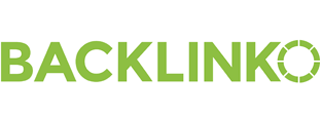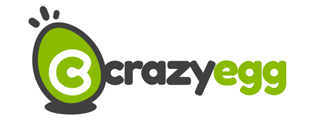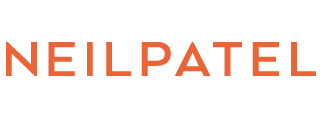Serpstat Overview
Serpstat is a growth hacking SEO platform for digital marketing solutions. The tool is easy-to-use for marketers, SEO experts, and copywriters with any level of qualification. Its features embrace SEO & PPC keyword research, backlink analysis, rank tracking, keyword clustering, and more. With Serpstat, you can easily identify your closest competitors and analyze their SEO strategies.
The tool is developed to facilitate your online marketing efforts and solve the following tasks:
- discover your competitors’ keywords and top pages to learn their strengths and weaknesses and outrank them;
- find out new link building opportunities analyzing your competitors’ link profiles;
- collect SEO & PPC keywords, with the right keyword difficulty, search volume, CPC, etc.;
- track your rankings for your target keywords;
- monitor your competitors’ positions and traffic share for the specific keywords;
- check your site performance in terms of technical optimization;
- group keywords based on their semantic similarity to collect the right words for specific pages and create site’s SEO architecture, and more.
Competitive Advantages
Along with providing the standard set of features, Serpstat has lots of competitive advantages:
- Serpstat counts 198 keyword databases with more than 2.14 billion keywords in the USA database.
- Keyword Clustering & Text Analytics tool is Serpstat’s unique feature based on the artificial intelligence.
- With the largest number of keywords that can be tracked with its Rank Tracking tool, Serpstat is the best decision for experts willing to monitor their sites’ positions.
- There’s a Checklist – a to-do list that lets you manage step-by-step SEO optimization. The tool lets you set tasks, watch them being fulfilled and check the results. You can create your own templates or use Serpstat templates to adapt them to your project goals.
- It’s an affordable SEO tool with a perfect price-to-functionality ratio.
- Serpstat Academy provides users with tips to how to take full advantage of operating the tool. In case any questions remained, Serpstat support team answers every user within a few minutes.
Serpstat Features
Website Analysis
Website Analysis tool includes Domain Analysis and URL Analysis sections so that it’s possible to analyze both the whole domain and the specific URL. Depending on the goals, users can either look through the overview report for the most crucial metrics such as keyword positions distribution and domain’s visibility trend or go with the more detailed reports on site’s keywords, competitors, best-performing pages, etc.
Domain Analysis
This section provides various reports:
Overview – the overall data on the analyzed website.
It shows the following metrics:
- Visibility is an index estimating how often the site is shown for the keywords it ranks in the top-20 search results. The score depends on the number and the popularity of these keywords. The higher the score is, the more visitors the site drives.
- SE Traffic represents an approximate number of visitors per month based on its keywords’ search volume and the site’s SERP positions.
- Organic Keywords report shows a number of keywords and keywords themselves for which the domain ranks in top-100 search results. The report also shows new, lost, improved, and declined keywords of the site.
- Ads Keywords report shows the number of ads and keywords the site is being promoted for in Google AdWords.
- Keyword Position Distribution is a graph displaying the distribution of the domain’s keywords within 1-100 positions.
- Subdomains report is a list of the domain’s subdomains placed in the hierarchical order.
- Visibility trend for a year is a graph displaying the history of the domain’s visibility over a year.
- Keywords trend for a year is a graph that shows how the number of domain’s keywords is changing over the year.
- Pages with the highest visibility is a list of the most traffic-driving pages of the domain.
- Competitors in Organic Search provides users with a list of domain’s competitors in SERP based on the number of common keywords.
- Competitors Graph shows how close the competitors are to each other based on their semantic similarity and visibility score.
- Ads Examples illustrate some ad copies used by the analyzed domain in the PPC campaign.
- Backlinks Overview provides a general report on domain’s link profile, including its Trust Rank, a number of referring and linked domains, etc.
- Rank Tracker is a dashboard showing domain’s positions for the tracked keywords.
- Site Audit is a dashboard displaying the domain’s technical optimization score and the number of high, middle, and low priority mistakes.
SEO Research represents all the reports necessary for finding the domain’s strengths and weaknesses in search and identifying its competitive advantages. The section provides the following reports:
- Keywords – keywords the domain ranks in Top 100 & domain’s positions for these keywords.
- Competitors – main competitors’ domains.
- Domain vs Domain – side-by-side websites’ comparison.
- Subdomains – subdomains of the queried website.
- Top pages – the website pages sorted by the amount of traffic they drive.
- Tree view – the domain’s pages with the keywords they rank for.
PPC Research section consists of the reports on the domain’s paid campaigns. It includes:
- Keywords – the report on all the keywords the domain bids on Google AdWords covering ad copies examples, ad positions in the search results, keyword’s monthly search volume, cost per click, and the level of competition for the keyword in the paid search.
- Сompetitors – competing domains in paid search according to the number of common keywords.
- Domain vs Domain – the comparison of 2 or 3 domains in order to identify the domain’s paid campaign gap and enlarge its keyword pool.
- Ads Examples – ad copies popping up in SERP for the keywords the domain bids on in Google AdWords.
- Ad Research – the URLs promoted in paid search with ads leading to these pages.
Batch Analysis lets quickly compare up to 200 competing domains by such parameters as visibility, traffic, PPC keywords, and more.
Infographics – the section with overall information of the domain displayed on different charts. With this feature, experts can easily export reports on their projects to show the work accomplished.
URL Analysis
This section provides comprehensive information on the specific URL. As well as Domain Analysis, it produces Overview report with overall statistics on the analyzed page, Competition section, keywords the page ranks for, and side-by-side comparison. Moreover, URL Analysis lets users discover keywords for which the other competitors are ranking in the top-10 search result, but the analyzed page isn’t ranking even in top-100. These words are called missing keywords.
Keyword Research tool
It’s the best decision for everyone who wants to collect the right keywords not using different platforms for different stages of their research. Apart from an Overview section, the tool consists of four blocks:
- SEO Research. The tool not only brings up all the keywords associated with the queried phrase but also shows related keywords and search suggestions.
Every keyword goes with:
- special block in SERP appearing for the query;
- keyword difficulty – the score from 0 to 100 estimating how difficult it’ll be to hit top 10 for the specific keyword;
- volume Google – the keyword search volume for the last month;
- traffic – approximate traffic the keyword may drive if ranking for it;
- cost – keyword’s cost per click;
- competition in PPC – the competition between domains in the paid advertisement;
- results – the number of search results for the query;
- social domains – social media platforms showing up in top-100 search results for the query.
Top Pages and Competitors reports let marketers analyze best performing content for the queried keyword and create the overall portrait of the niche you’re going to work with.
- PPC Research. This section is created to help PPC specialists research keywords, analyze their competition in paid search, and create effective ad copies. Its Keyword Selection report brings up the list of paid keywords ranking in top-100 Google with ad example for each keyword, its position in paid search results, volume, CPC, and the level of competition.
With PPC Research, you can see ad examples popping up for the queried keyword, the pages they lead to, and other keywords these ads are ranking for.
- Content Marketing. The feature provides search questions the audience asks on search engines using the queried keyword.
It’s a must-use report for all the content marketers who want to learn their target audience and create engaging content.
- SERP Analysis. The report on top-100 search results for the queried keyword.
Backlink Analysis
The report shows Trust Rank score, new & lost backlinks, frequently used anchors, the number of links on your top pages, and more.
Analyzing your competitors’ link profiles with Serpstat, you discover new link building opportunities. You’ll get insights on their link sources, anchor texts, and, what’s the most important, their lost links over the last 90 days. With the last report, you can find out the sites for you to reach out and place your links there.
Site Audit
The feature lets you identify high, middle, or low priority technical issues on your site and gives you the tips on how you could fix them.
Site Audit tool provides a dashboard with both the previous and present audit results for a user to see the changes happened after the last audit. Serpstat checks the following aspects:
- HTTP status codes
- Meta tags
- Headings
- Content
- Multimedia
- Accessibility & indexation
- Redirects
- Links
- Server parameters
- HTTPS certificate
- Hreflang attributes
- AMP pages
- Markup
Tapping on each issue, you see issue description, the tip to how to fix it, and a graph with issue history, based on the number of errors found previously and now.
Loading Speed Overview shows the issues influencing page speed both for mobile and desktop versions of the site.
Rank Tracker
It’s one of the best Serpstat features. With Rank Tracker, you can:
- Track your dropped or increased positions.
- Analyze competitors’ positions for your tracked keywords not spending extra limits.
- Get the data on how search traffic is distributed in your niche.
- Check your landing pages for every tracked keyword.
The best thing about this tool is that when you see your positions dropped significantly, you can check ‘storm’ graph on how the top-100 was changing during some period. The higher the storm is, the more chances it’s Google testing its algorithms, and everything will be alright soon.
Keyword clustering & Text Analytics
The tool is essential for those who work with keywords a lot and know how difficult it is to group hundreds or thousands of phrases manually. The tool will do it for you, grouping the words based on their semantic similarity.
As, unlike other tools, Serpstat combines clusters in the supercluster, it’s much easier now to create a site’s SEO architecture.
The connection strength between the words in the clusters depends on the parameters you set when creating the project:
- The linkage strength parameter (Weak/Medium/Strong) influences on the number of common URLs in top-30 results for a keyword. Weak parameter requires the keywords must have at least 3 common URLs in top-30 search results, while Strong tells there should be at least 7 common URLs for the keywords to form one cluster.
- Type of clustering (Soft/Hard) determines the number of keywords having in common 3 or 7 common URLs which are enough for one cluster to be created. Soft type requires at least one pair of keywords to have 3 or 7 common URLs in top-30 of search results. Hard type means all the keywords in a cluster should have 3 or 7 common URLs.
Text Analytics is created to provide advice on how you could improve your on-page SEO to boost your rankings. The tool analyzes the keywords in the resulted clusters and compares them to the content of top-15 search results. With TA, you’ll discover which keywords you’d better remove from your list and which ones you should add to your Title, H1, and body text, as they’re highly relevant to the topic. It counts how many competitors are using the same keywords and evaluates the importance of using them on your page.
If entering the existing URL for each cluster, Text Analytics tool displays whether the page contains the recommended keyword or not. It also analyzes page’s body text to give the recommendations on the desired amount of text and highlights the keyword stuffing.
Checklist
It’s a to-do list by Serpstat for team management and project tasks monitoring. The tool lets you set tasks, watch them being fulfilled and check the results. This feature lets you create different checklists for different goals.
There are the following types of ready templates:
- Technical part is responsible for optimizing technical parameters of the project.
- Content templates are used for content quality control and optimization.
- Links – backlink analysis of the project.
- Business analysis is set for analyzing the niche and planning project processes.
- Other project parameters template is for monitoring, analytics, regional settings, social factors, reputation, and branding.
10% discount for all plans and periods (except for Plan A).






























 Get the new Chrome Extension!
Get the new Chrome Extension!